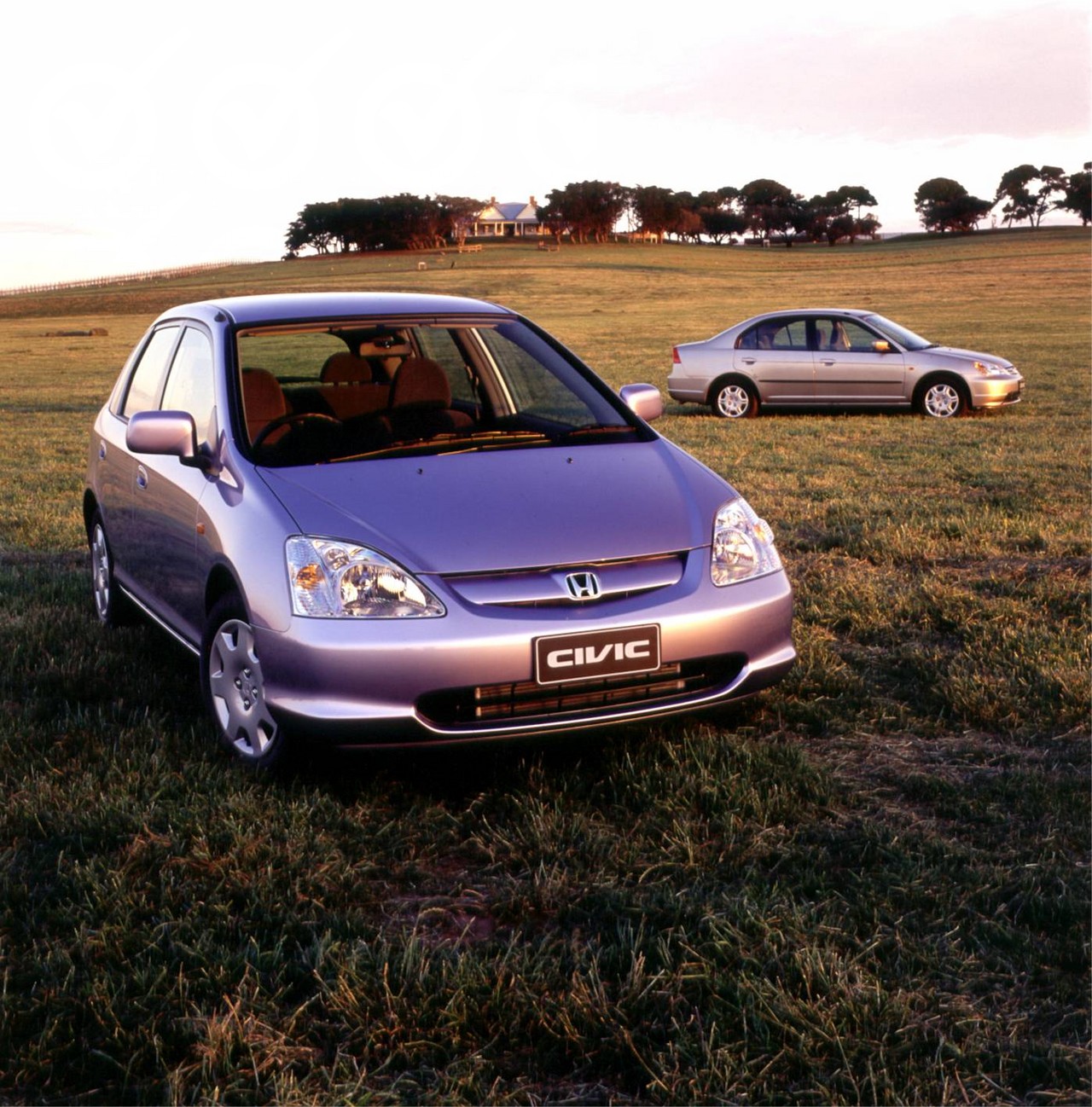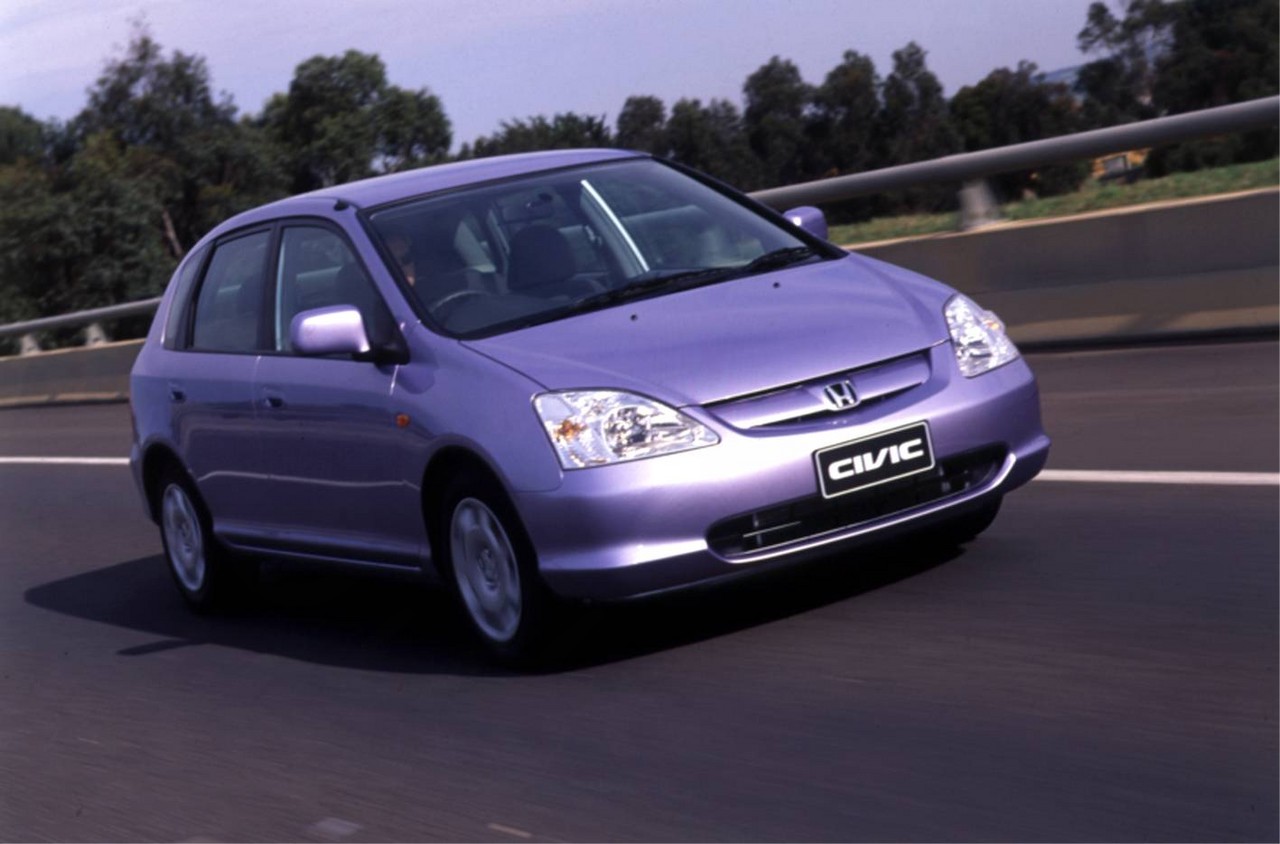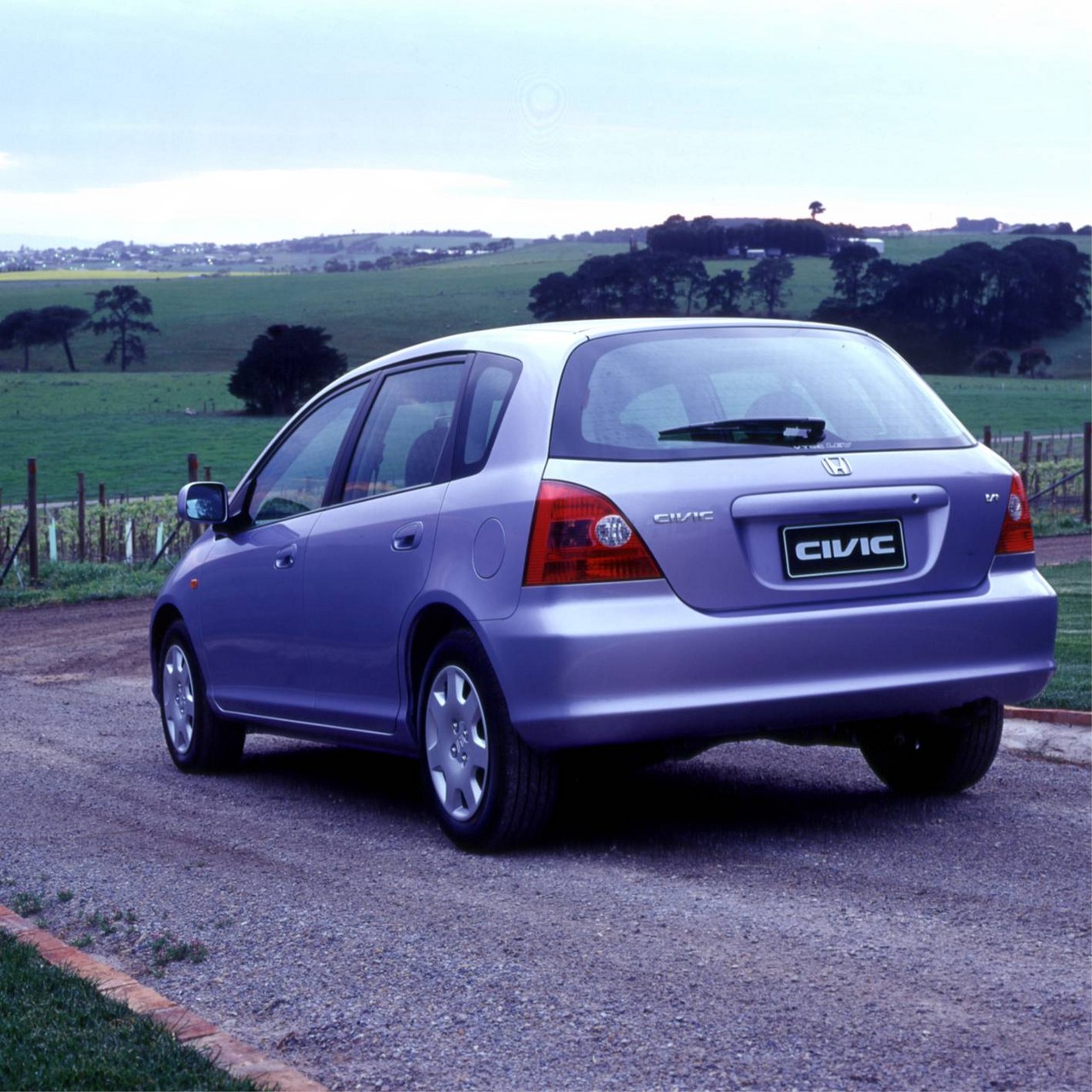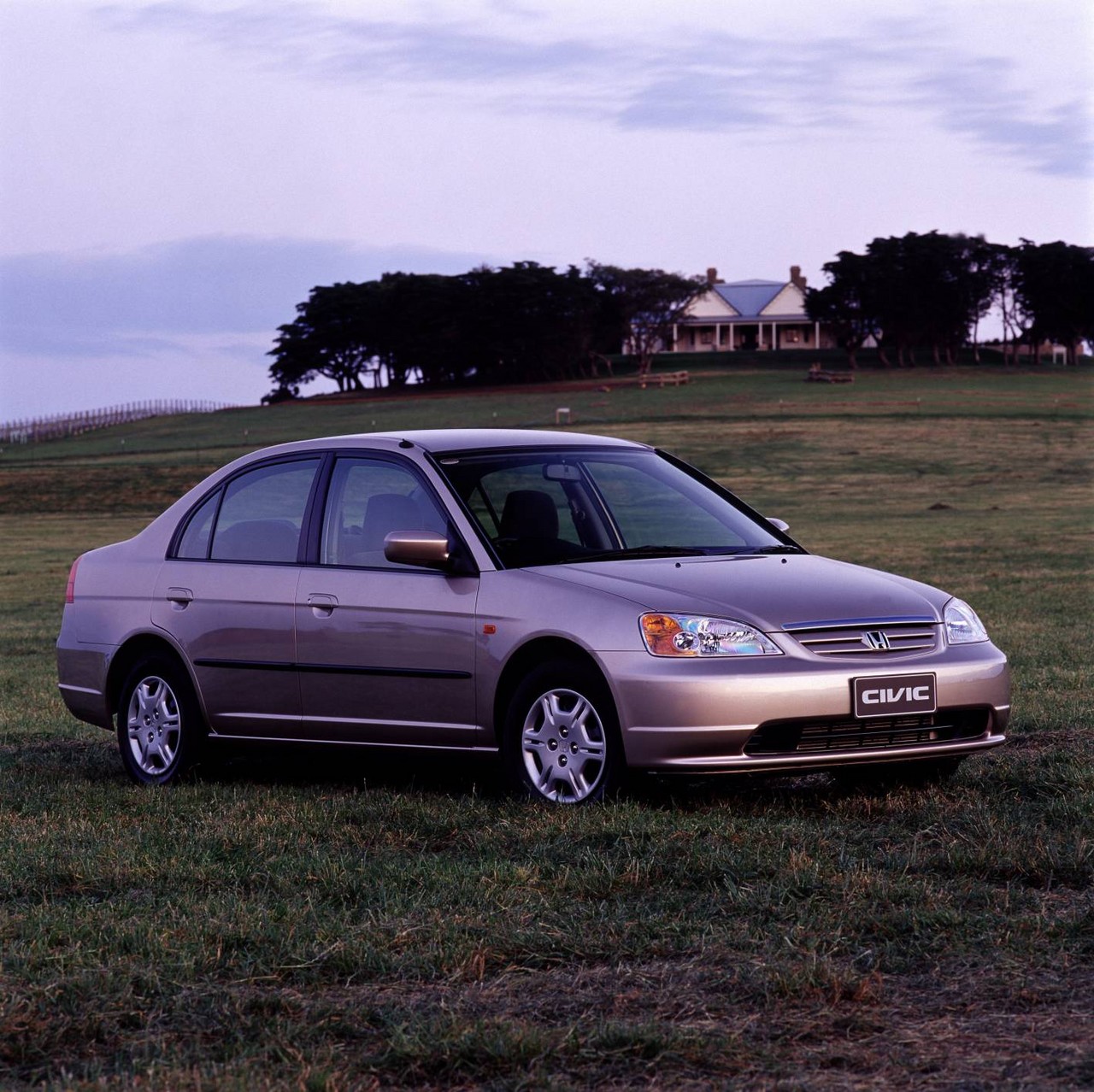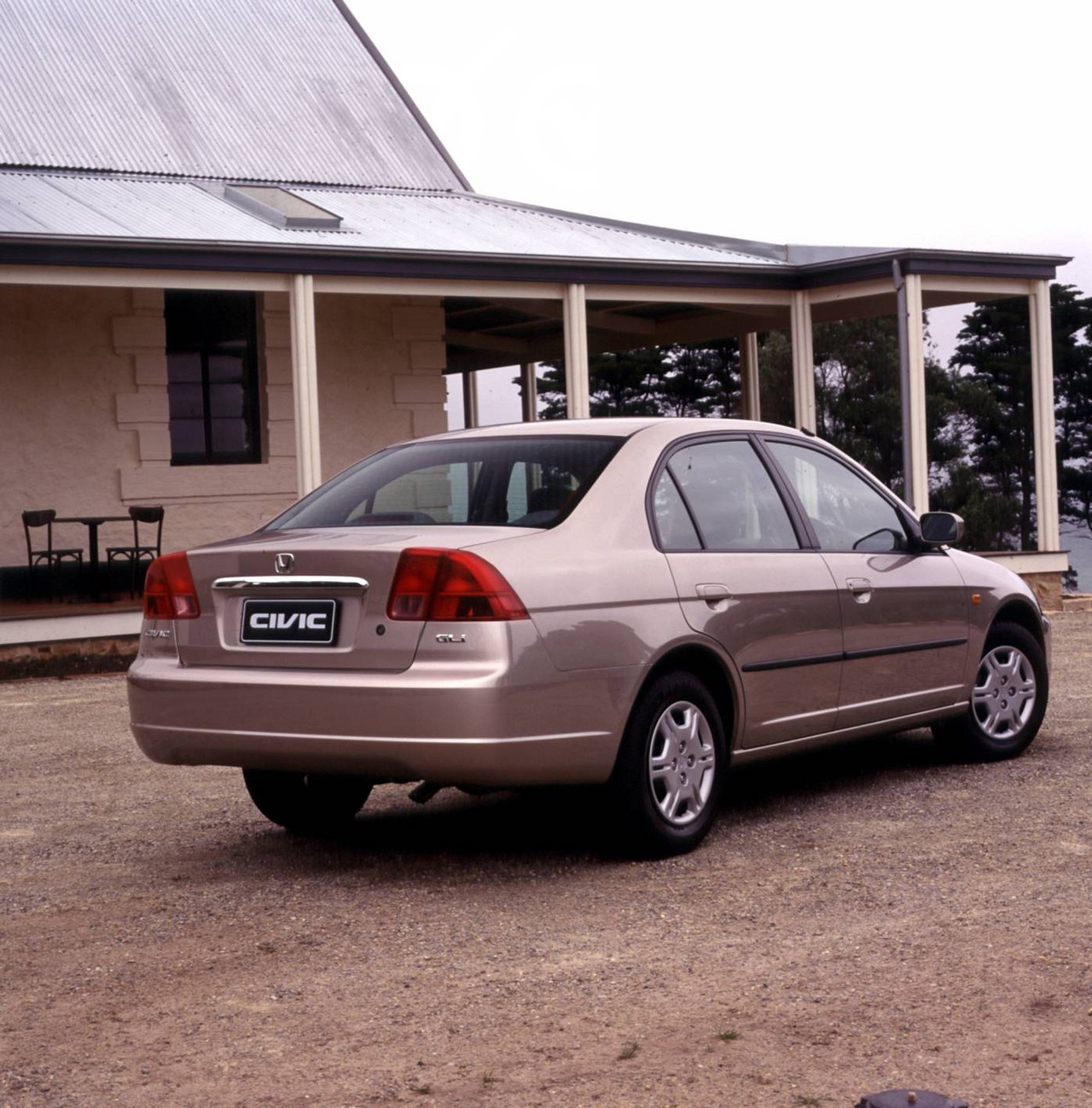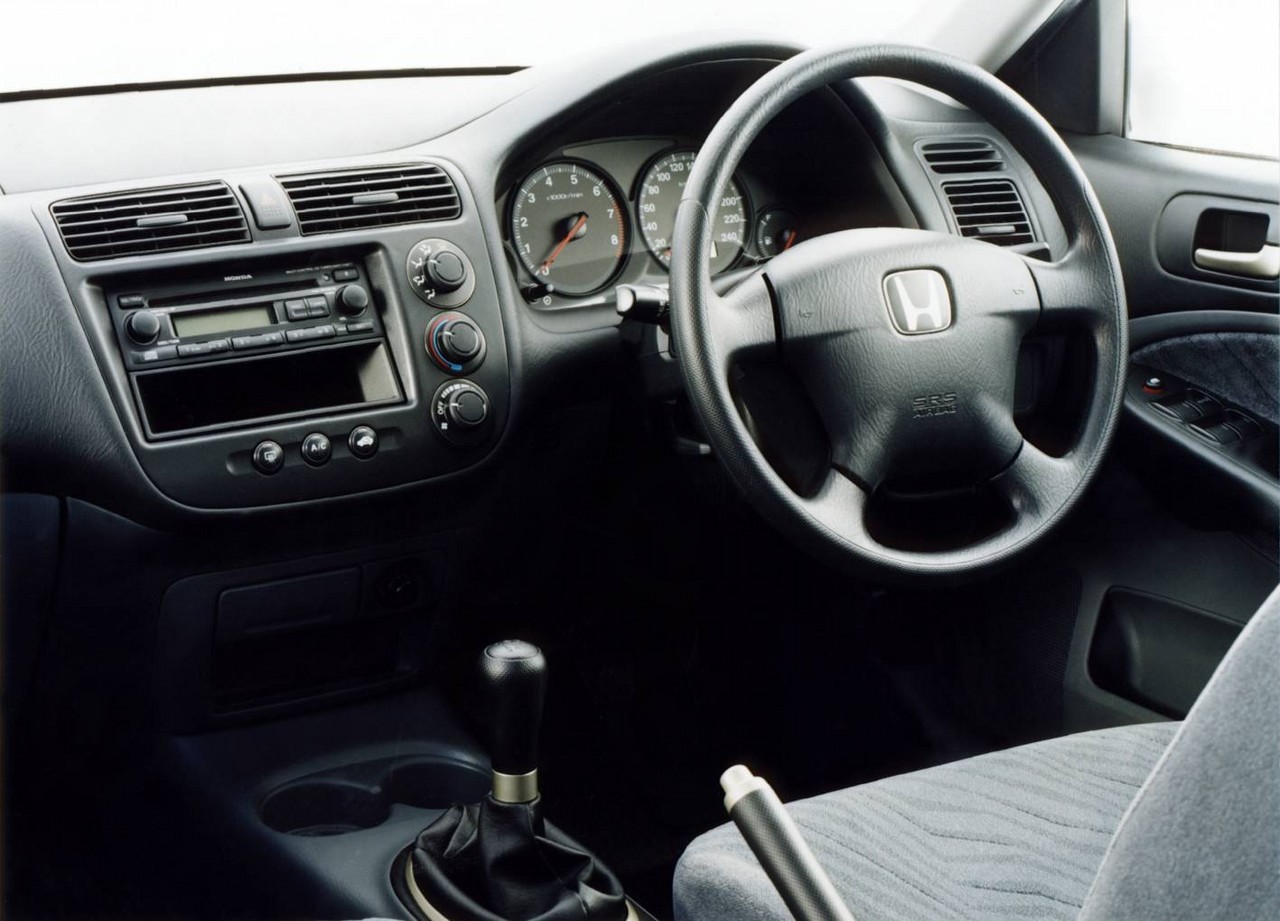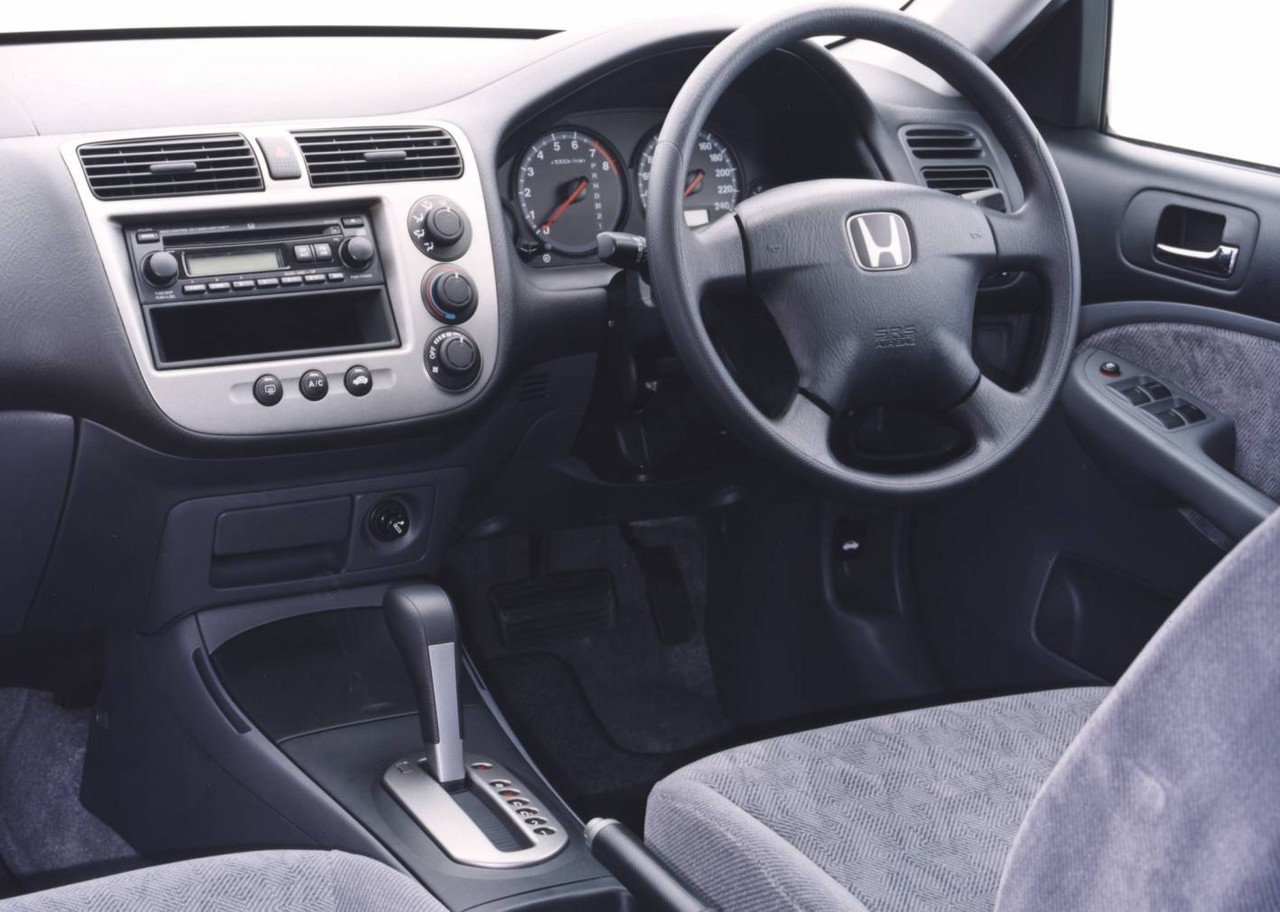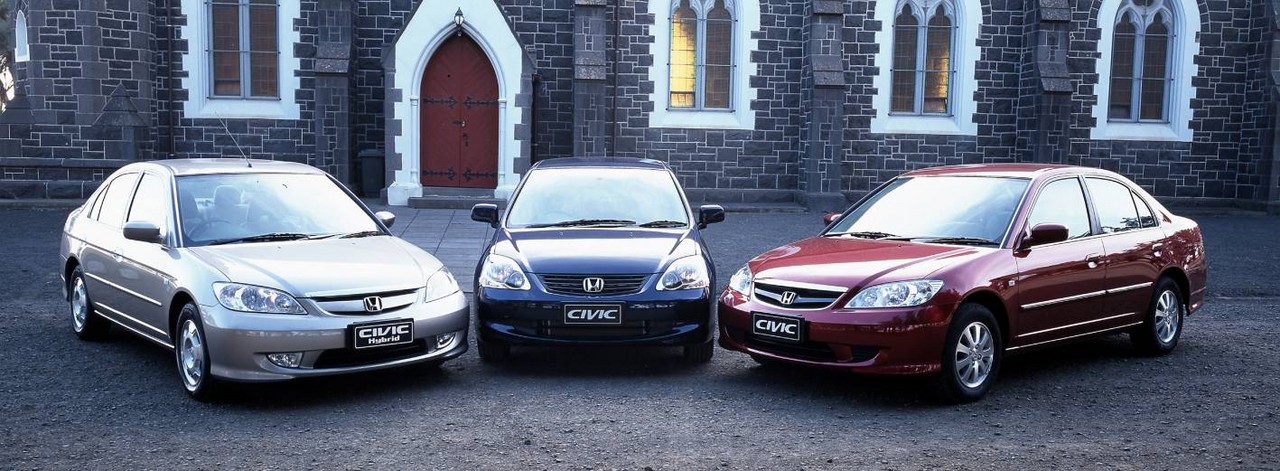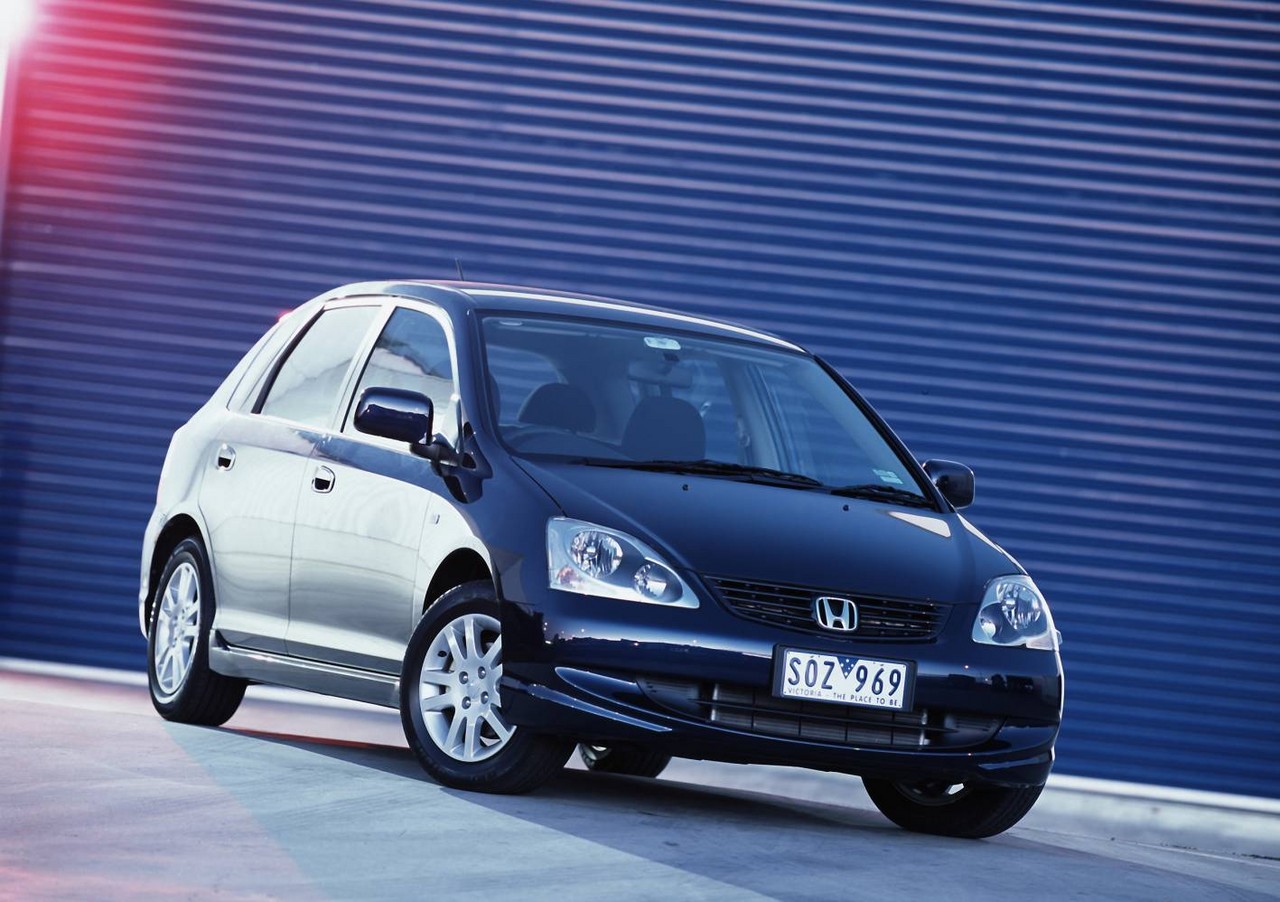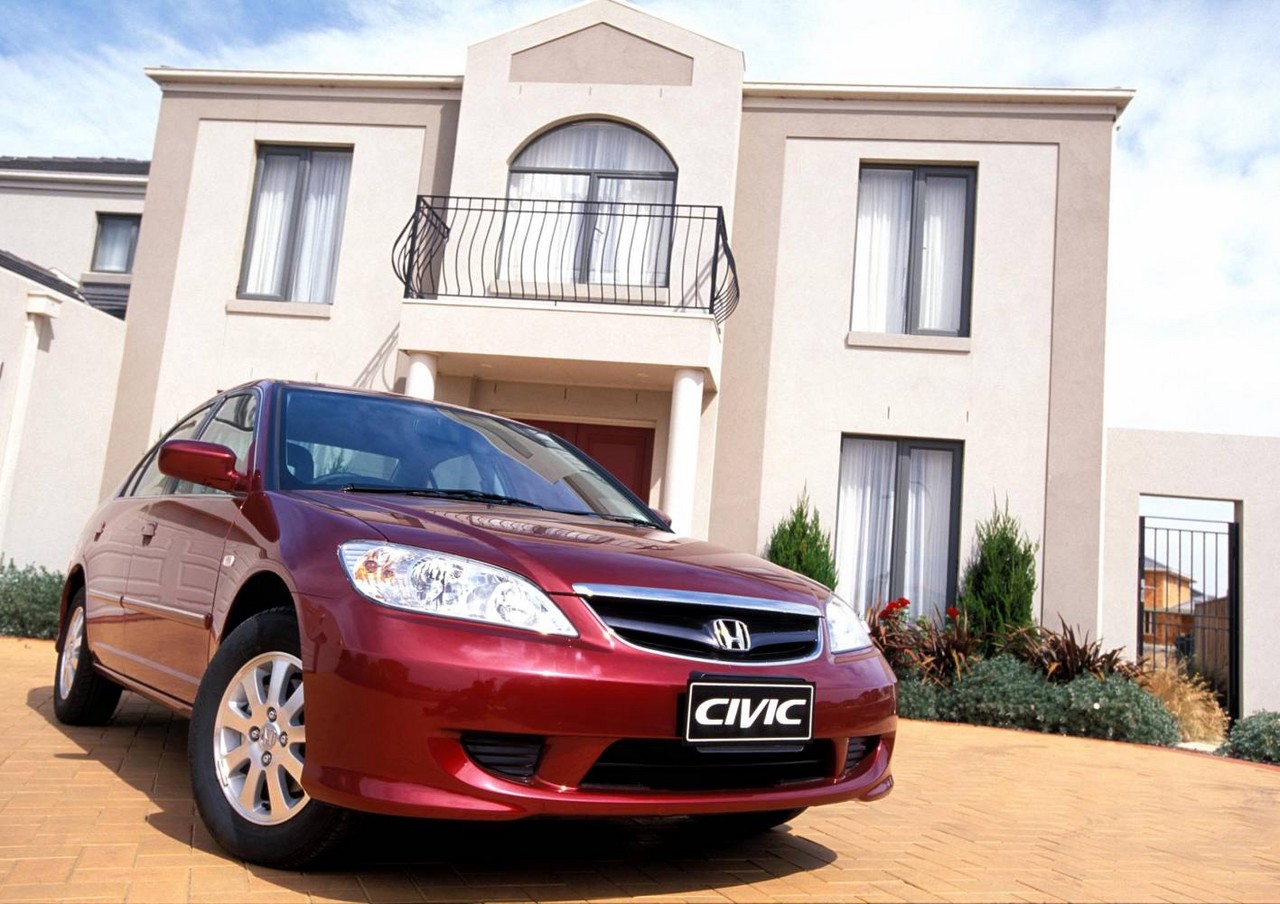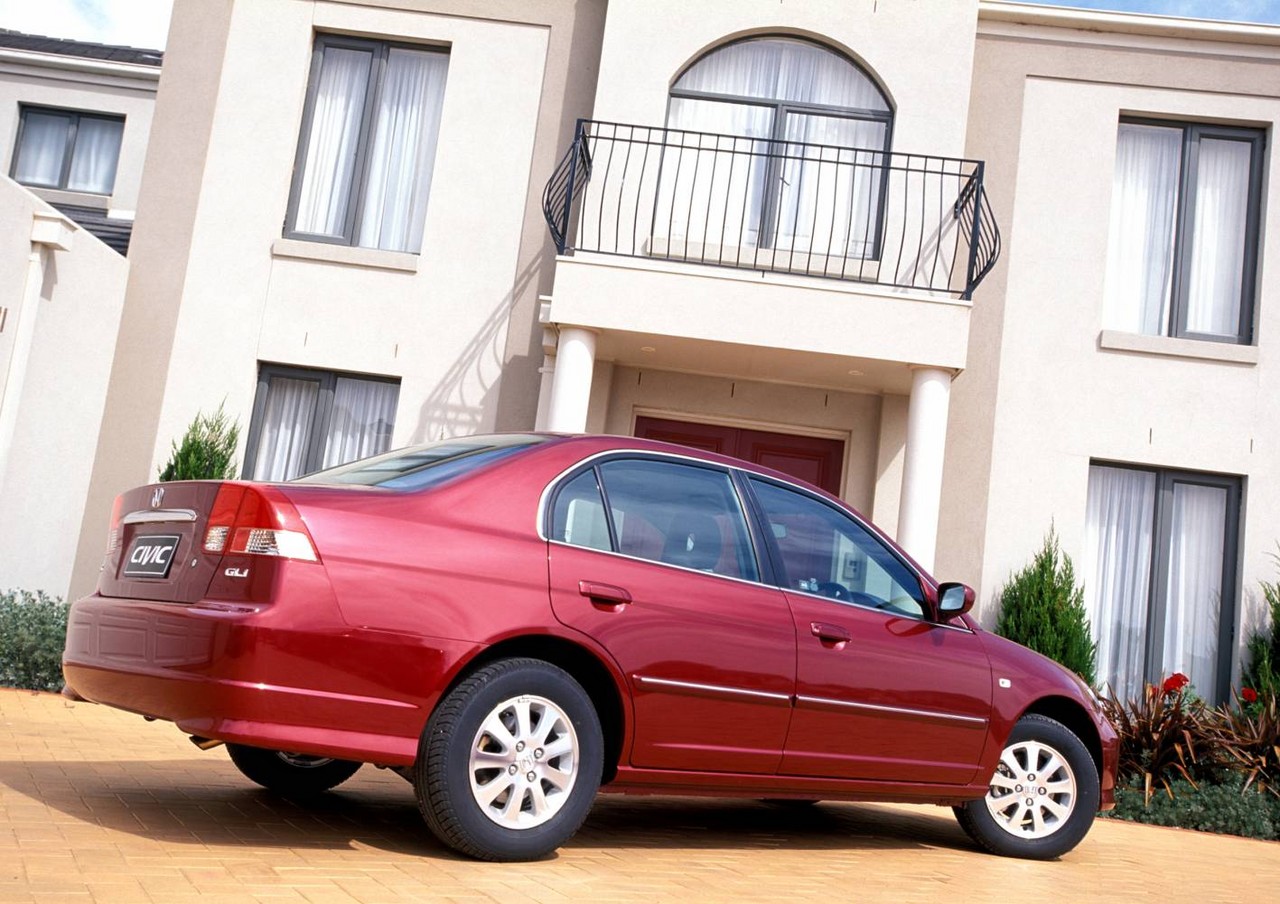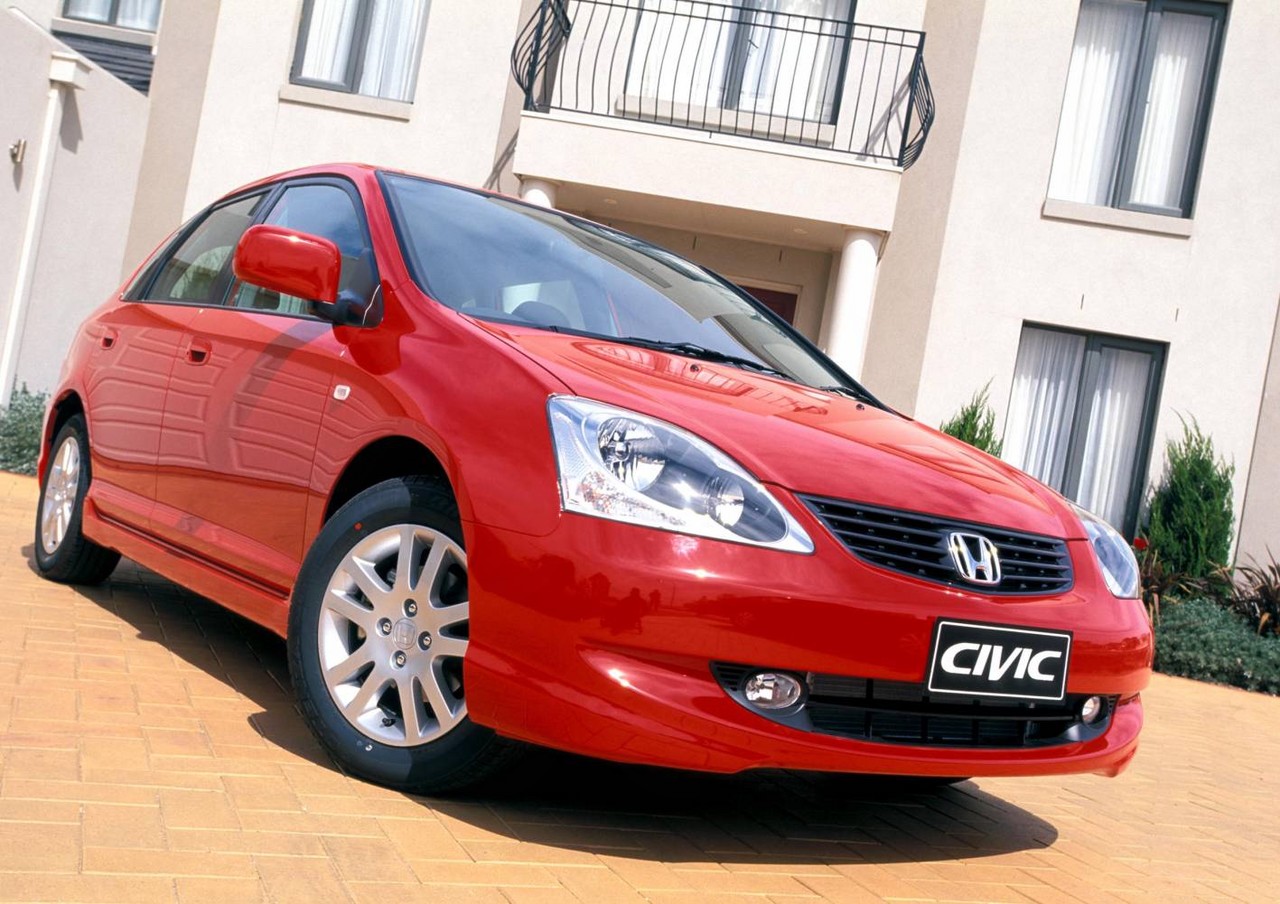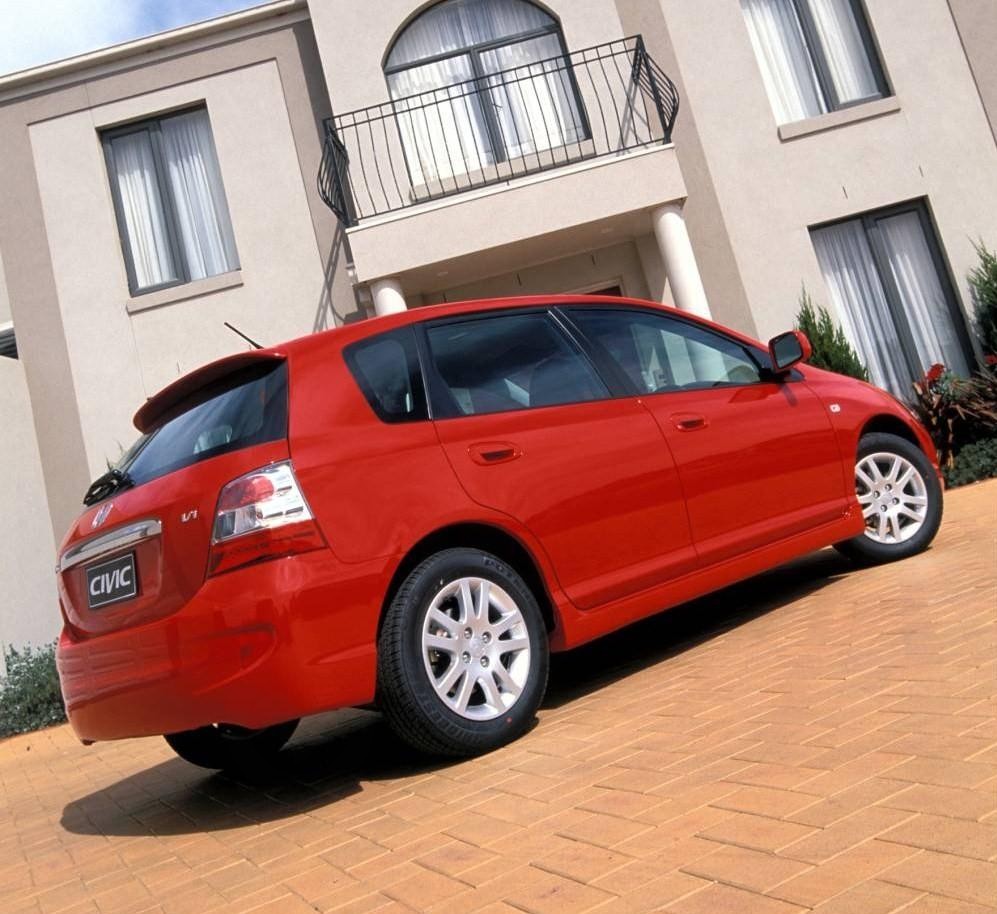
- Spacious interior for Civic hatch
- Refined manual transmission
- For Civic hatch, flat cabin floor
- Short-travel suspension lacks compliance
- Civic hatch has large turning circle
- Temporary spare wheel
Honda ES1.I and EU3.I Civic (2000-03)
Overview
Released in November 2000, the seventh generation Honda Civic range consisted of the ES1 Civic sedan and EU3 Civic five-door hatchback. Manufactured in Suzuka, Japan, the front-wheel drive ES1 and EU3 Civics were powered by 1.7-litre four-cylinder petrol engines that were mated to either four-speed automatic or five-speed manual transmissions. In May 2001, the range was temporarily expanded with a limited-run VTi hatchback.
D17A1 and D17A2 engines
The Civic GLi and Vi variants were powered by Honda’s D17A1 four-cylinder engine which had a single overhead camshaft, four valves per cylinder and a compression ratio of 9.5:1.
The Civic VTi was powered by the D17A2 which had a higher compression ratio (9.9:1) and Honda’s VTEC (Variable Valve Timing and Lift Electronic Control) system which provided different camshaft profiles for low and high rpm operation. For the D17A2 engine, the camshaft profiles changed at 4500 rpm.
Dimensions and body
Compared to its EK1 Civic sedan predecessor, the ES1 Civic sedan was the same length (at 4450 mm), 20 mm wider (1715 mm), 50 mm taller (1440 mm) and had the same length wheelbase (2620 mm). Relative to the sedan, however, the EU3 Civic hatchbacks were 165 mm shorter (at 4285 mm), 20 mm narrower (1695 mm), 55 mm taller (1495 mm) and had 80 mm longer wheelbases (2680 mm). The seventh generation Civic body also achieved a 53 per cent increase in torsional rigidity due to the use of larger cross sections and the reinforcement of joints and connecting points.
Suspension
The ES1 and EU3 Civics had MacPherson strut front suspension and double wishbone rear suspension.
| Body | Variant | Years | Engine | Trans. | Peak power | Peak torque |
|---|---|---|---|---|---|---|
| 4dr sedan | GLi | 2000-03 | 1.7-litre petrolI4 | 4sp auto, 5sp man. |
88 kW at 6200 rpm | 150 Nm at 4500 rpm |
| 5dr hatch | Vi | 2000-03 | 1.7-litre petrol I4 (VTEC) | 4sp auto, 5sp man. |
96 kW at 6300 rpm | 155 Nm at 4800 rpm |
| VTi | 2001 |
Safety equipment
Standard safety equipment for the ES1.I and EU3.I CIvic included dual front airbags and front seatbelts with pretensioners and load limiters; the Civic VTi was also equipped with ABS. From 2002, however, ABS was standard across the range.
Euro NCAP crash testing
In Euro NCAP crash testing , the Mk.7 Civic hatch – when fitted with front side airbags – received a four star adult occupant protection rating with a score of 27. In the front offset test, relatively high belt loads to the chest were recorded and the structure behind the fascia was likely to injury both front occupants’ legs.
Features: Civic GLi, Vi and VTi
Standard features for the Civic GLi included a four speaker sound system with CD player, 60/40 split and folding rear seats, tilt-adjustable steering wheel, power mirrors and windows, remote central locking and immobiliser. From February 2002, the GLi was fitted with 14-inch alloy wheels, a full-size spare wheel, an in-glass rear antenna, body-coloured side protectors and chrome window mouldings.
Compared to the GLi, the Civic Vi added air conditioning and a rear spoiler; from May 2002, the Vi was also fitted with 15-inch alloy wheels.
The Civic VTi was further equipped with climate control air conditioning, front and rear armrests, outside temperature dash display, driver and front passenger map lights and a micro antenna.
2001 Civic Vi Indy edition
In October 2001, the limited-run Civic Vi Indy edition was released. Compared to the standard Civic Vi, the Indy edition added 15-inch alloy wheels, front fog lights, front and rear spoiler, side skirts, chrome exhaust tips and Indy badging.
Honda ES1.II and EU3.II Civic (2003-05)
Overview
Released in October 2003 for the Civic Vi hatchback and January 2004 for the Civic GLi sedan, changes for the ES1 and EU3 Series II (ES1.II and EU3.II) Civic were largely cosmetic.
The ES1.II and EU3.II Civics could be identified by their new bumpers, alloy wheel designs and brighter projector-style headlights with a wider beam. Inside, grey trim replaced black and there were more supportive front seats.
| Body | Variant | Years | Engine | Trans. | Peak power | Peak torque |
|---|---|---|---|---|---|---|
| 4dr sedan | GLi | 2004-05 | 1.7-litre petrol I4 | 4sp auto, 5sp man. |
88 kW at 6200 rpm | 150 Nm at 4500 rpm |
| 5dr hatch | Vi | 2003-05 | 1.7-litre petrol I4 (VTEC) | 4sp auto, 5sp man. |
96 kW at 6300 rpm | 155 Nm at 4800 rpm |
Features: Civic GLi and Vi
Compared to their Series I predecessors, standard features for the ES1.II and EU3.II Civic were largely unchanged.
Related links
